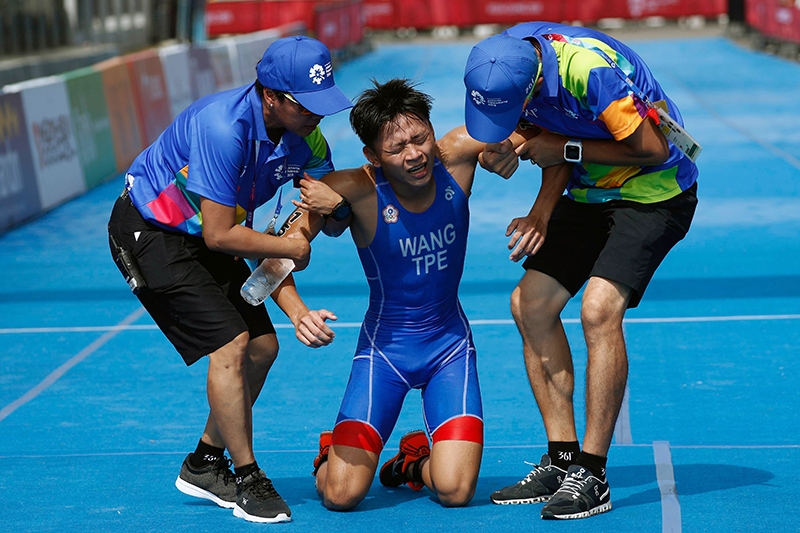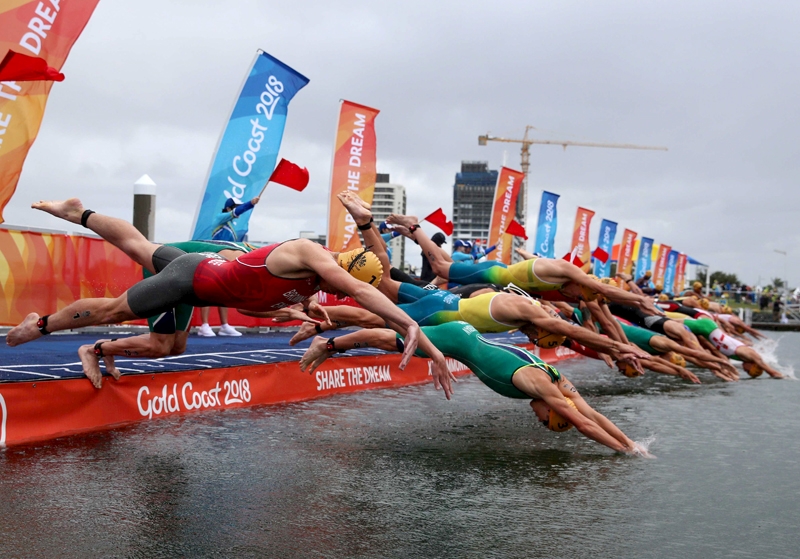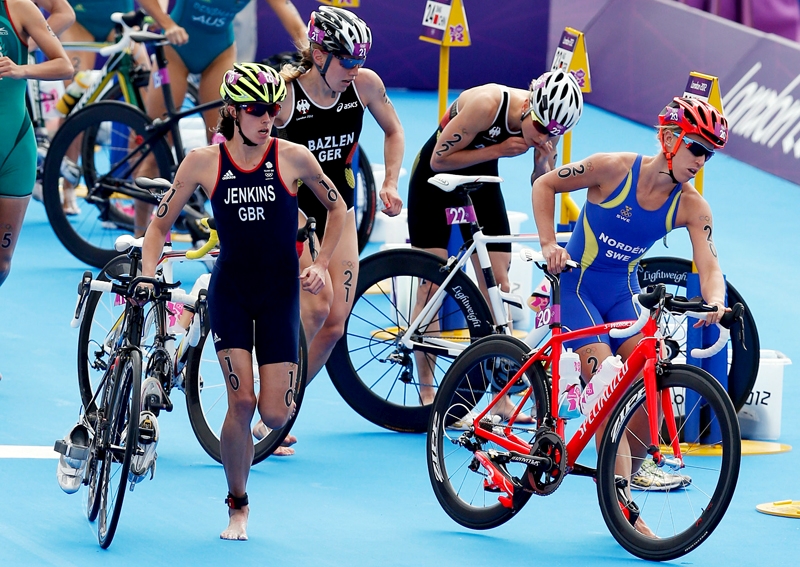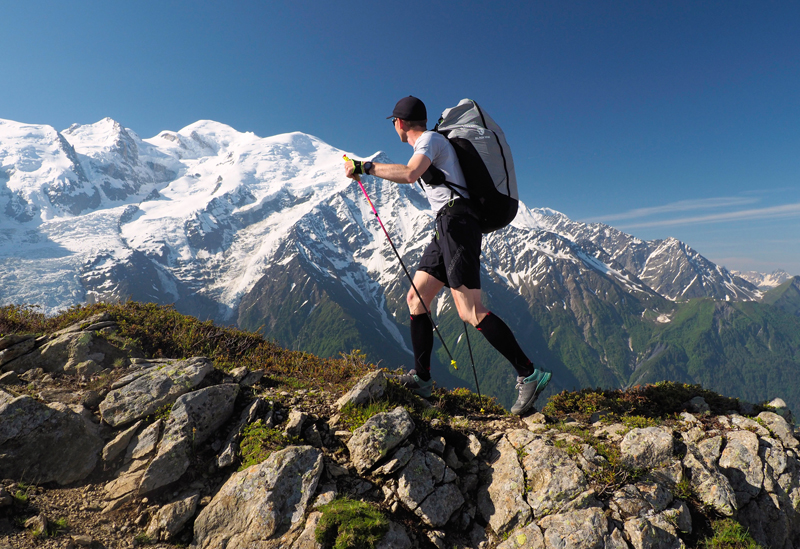You are viewing 1 of your 1 free articles. For unlimited access take a risk-free trial
Running performance and injuries in triathletes: the plane truth!

Andrew Hamilton looks at research into how prior cycling affects biomechanics, and what this means for triathletes seeking maximum performance with minimum injury risk
Although triathletes experience lower rates of injury than many other sportsmen and women, injuries can and do occur. Interestingly, studies on injury in triathlon indicate that more than 70% of all injuries that occur while training for or competing in a triathlon happen during the running phase. We know that maintaining an aerodynamic position on a bicycle during a triathlon places triathletes in a prolonged ‘trunk flexed’ (bent forwards) position, which may affect lower extremity running biomechanics following cycling. This has led some researchers to speculate whether the postural changes induced by a long bike ride could affect both injury risk and performance in triathletes.An insight into the problem
There’s very little research into this topic, but one study by US researchers provides some valuable insight - with important implications for triathletes who suffer or have suffered from running-related injuries(1). In this study, the researchers at the University of Miami looked at the running posture and movement patterns in the ‘saggital plane’ (see figure 1) after a 30-minute cycling protocol. They then compared the results to the movement patterns of a run, which was performed without prior cycling.Figure 1: The sagittal plane

To do this, 28 recreational athletes with prior triathlon experience ran at a self-selected speed on a custom-built treadmill before and after a 30-minute cycling protocol. The treadmill was surrounded by a 12-camera motion analysis system, which recorded the athletes’ movement patterns. The cycling intensity was set on the rate of perceived exertion scale (RPE) at an intensity of 12-14 (moderate to somewhat hard). Three-dimensional kinematics were measured before the ride, and then again at 2-minutes, 6-minutes, 10-minutes, and 14-minutes into the running segment (ie after the ride). The researchers then looked at the recorded movement patterns to see whether the prior cycling influenced running posture and biomechanics compared to no prior cycling.
Forward leaning
The analysis showed that when the subjects had completed a prior cycling session, their running movement were very significantly altered compared to running without prior cycling. In particular, the peak angles for anterior (forward) pelvic tilt, hip flexion and spine extension increased, while hip extension decreased at all time points. In a nutshell, the ‘forward lean’ of the pelvis and exaggerated hip flexion had led to a somewhat ‘forward’ leaning posture during the run with the runners less able to maintain an upright posture and optimum stride length.The authors concluded that cycling in an aerodynamic position for 30 minutes was enough to induce changes in sagittal plane running kinematics of the spine, pelvis, and hip for at least 14 minutes following cycling and that these alterations in kinematics were of sufficient magnitude to increase the risk for lower extremity injuries and affect running performance in triathletes. Given these findings, the logical implication is that triathletes who are prone to running-related injuries may need to perform more hip flexor stretching (see figure 2) and gluteal/lower back strengthening to help improve hip extension and improve running posture after cycling.
Figure 2: Hip flexor stretch

By adopting a lunge position, the hip flexor muscles on the trailing leg are stretched. Gentle pressure applied to the buttock of the rear leg in a forwards direction increases the stretch intensity.
Pre-run cycling and running efficiency
If a prior bout of cycling can affect running biomechanics enough to alter kinematics and running posture, a logical question to ask is if these cycling-induced changes also affect running efficiency (also known as economy – higher levels of economy/efficiency means less energy is required to sustain a given pace)?As with kinematics and posture, there’s a paucity of data about the cycling-induced effects on running economy. However, a study by Aussie scientists did look at this topic – specifically whether a 45 min high-intensity cycle influenced lower limb movement and patterns of muscle recruitment during running, and whether these changes in limb movement or muscle recruitment were associated with changes in running economy(2).
The researchers recruited a group of 15 moderately trained triathletes and compared their measures of running economy, muscle activity and limb movement (again, in the sagittal plane) under two conditions:
- Control trial – a run with no preceding cycle ride
- Prior cycling trial – a run performed immediately after a 45 min high-intensity cycle ride
This is perhaps unsurprising; compared to running, there is relatively limited ankle flexion and extension movement when pedaling. After a lengthy period of leg motion with limited ankle involvement, it is likely that the optimum muscle recruitment patterns (involving the calf and shin) to facilitate optimum ankle motion for running will take a while to ‘get going’. It follows therefore that developing optimum ankle strength and flexibility (calf raises and stretches) could be important for triathletes during the bike-run transition. It might also be worthwhile mobilizing the ankles during the last few minutes on the bike ride to prepare for the run (although this strategy has yet to be tested).
References
- J Sci Med Sport. 2013 May;16(3):259-65
- J Sci Med Sport. 2010 Jul;13(4):460-4
Newsletter Sign Up
Testimonials
Dr. Alexandra Fandetti-Robin, Back & Body Chiropractic
Elspeth Cowell MSCh DpodM SRCh HCPC reg
William Hunter, Nuffield Health
Newsletter Sign Up
Coaches Testimonials
Dr. Alexandra Fandetti-Robin, Back & Body Chiropractic
Elspeth Cowell MSCh DpodM SRCh HCPC reg
William Hunter, Nuffield Health
Keep up with latest sports science research and apply it to maximize performance
Today you have the chance to join a group of athletes, and sports coaches/trainers who all have something special in common...
They use the latest research to improve performance for themselves and their clients - both athletes and sports teams - with help from global specialists in the fields of sports science, sports medicine and sports psychology.
They do this by reading Sports Performance Bulletin, an easy-to-digest but serious-minded journal dedicated to high performance sports. SPB offers a wealth of information and insight into the latest research, in an easily-accessible and understood format, along with a wealth of practical recommendations.
*includes 3 coaching manuals
Get Inspired
All the latest techniques and approaches
Sports Performance Bulletin helps dedicated endurance athletes improve their performance. Sense-checking the latest sports science research, and sourcing evidence and case studies to support findings, Sports Performance Bulletin turns proven insights into easily digestible practical advice. Supporting athletes, coaches and professionals who wish to ensure their guidance and programmes are kept right up to date and based on credible science.













